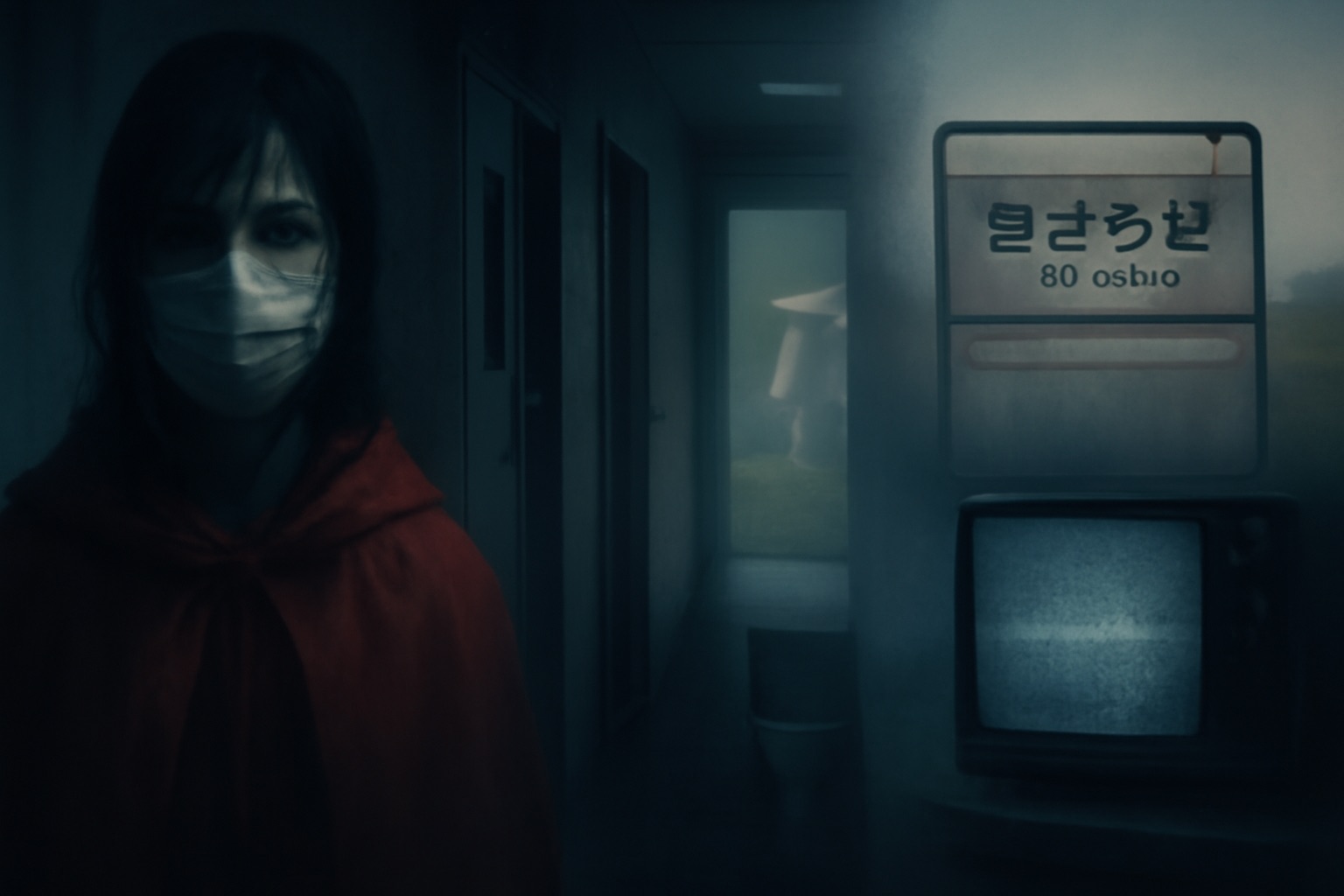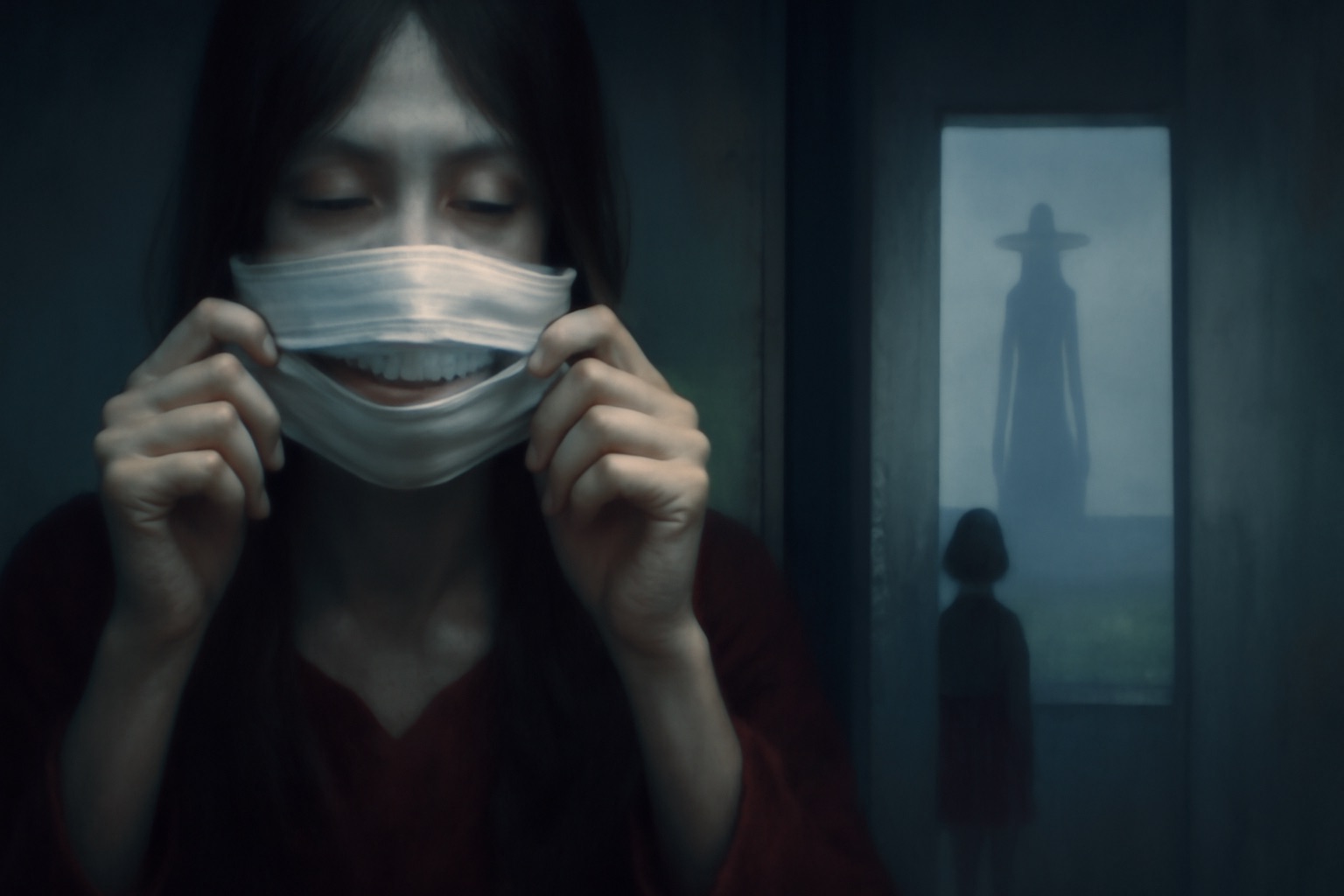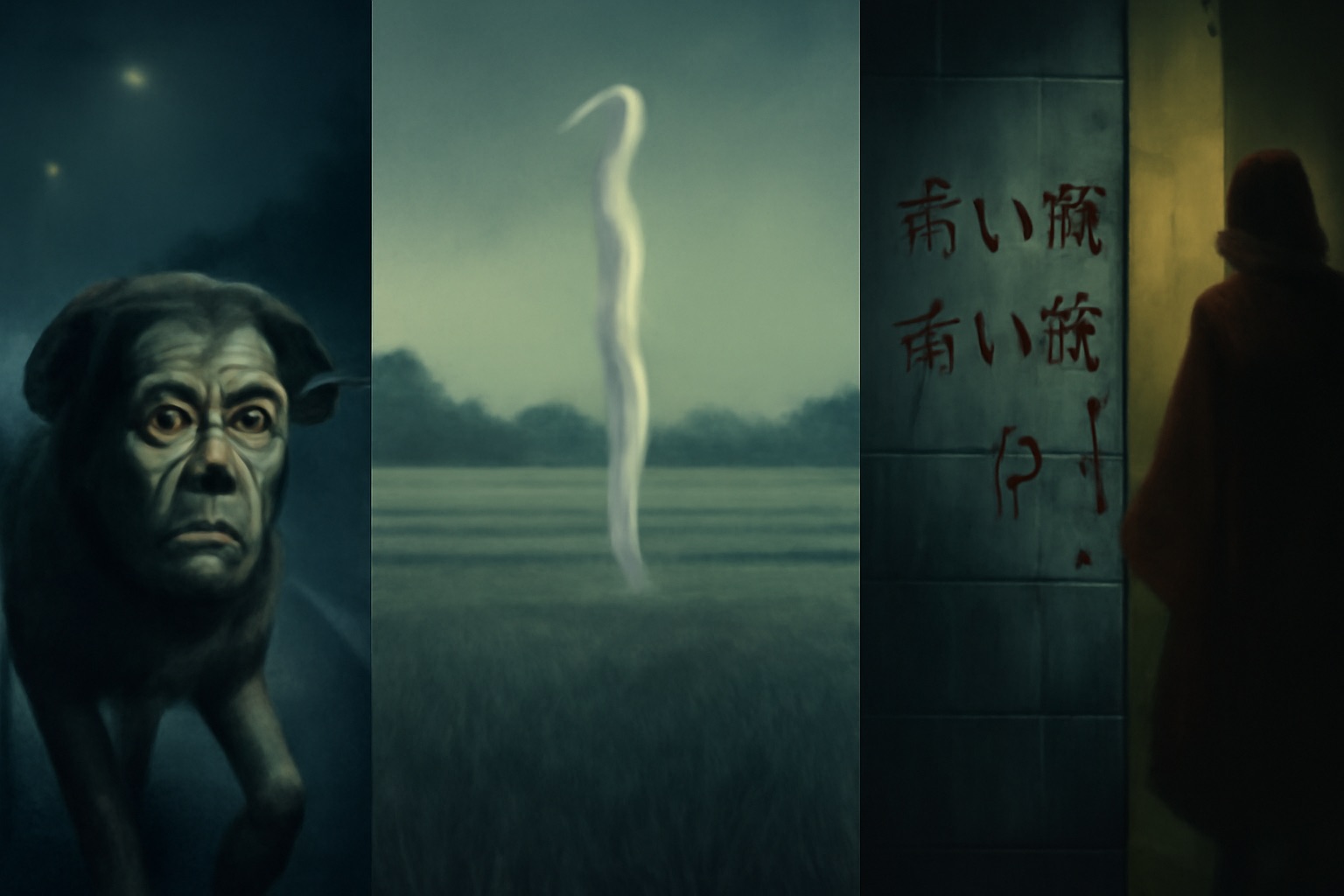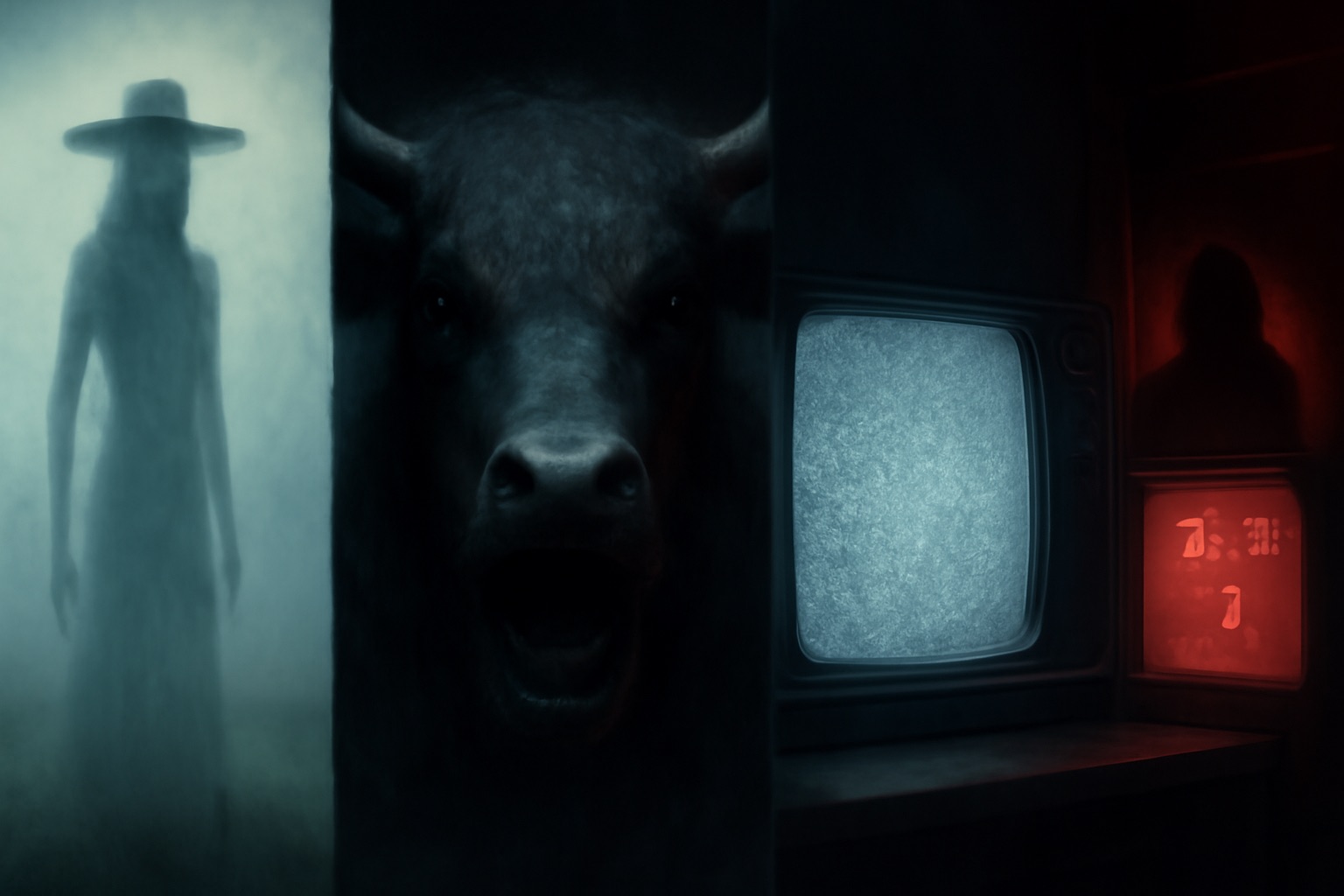The Definitive Guide to Japan's Scariest Urban Legends: From Kuchisake-Onna to Kisaragi Station
The Definitive Guide to Japan’s Scariest Urban Legends: From Kuchisake-Onna to Kisaragi Station

Japanese horror is globally renowned, but beyond the cinematic ghosts of The Ring and Ju-on lies a deeper, darker, and more persistent source of fear: the Japanese urban legend (or toshi densetsu). Unlike traditional folklore, these stories evolve rapidly from schoolyard whispers, internet forums, and the anxieties of a hyper-modern society, featuring terrifying encounters with ghosts in bathroom stalls, phantom women on dark streets, cursed online videos, and even trips to a train station that exists outside of reality.
At TOCANA, we have gone deep into the research, separating myth from reality to provide the most authoritative guides on these contemporary terrors. This is your comprehensive hub to explore the full spectrum of Japan’s scariest and most enduring modern legends, starting with the iconic Slit-Mouthed Woman.
Table of Contents
The Iconic Women and Ghosts of Japanese Terror
These female figures represent some of the most famous and psychologically chilling stories in Japanese urban legends, preying on everyday fears and societal anxieties.

Kuchisake-Onna: The Slit-Mouthed Woman
It begins with a deceptively simple question on a dark street: “Am I pretty?” But for any victim who encounters the Kuchisake-onna, there is no safe answer. The tall woman, often wearing a surgical mask to hide the horrific, ear-to-ear slit that replaced her mouth, is one of the most enduring symbols of Japanese horror.
[The Full Story: The Definitive Guide to Kuchisake-Onna: The Terrifying Slit-Mouthed Woman]
Our definitive guide explores the full arc of this legend:
- The shocking nationwide panic of 1979 that terrified parents and shut down schools.
- The origins that tie her to samurai folklore, botched cosmetic surgery, and the embodiment of “stranger danger.”
- The bizarre and often comical countermeasures rumored to repel her, such as shouting “pomade!”
This complex ghost remains a powerful cultural phenomenon, representing the anxiety of a modern society where dangers can lurk behind the most ordinary façade.
Don’t wait for her question. Dive deeper into the terror with our complete analysis:
[Read The Definitive Guide to Kuchisake-Onna: Japan’s Terrifying Slit-Mouthed Woman]
Hanako-san: The Ghost in the Bathroom Stall
If the Kuchisake-onna haunts the streets, then Hanako-san of the Toilet (Toire no Hanako-san) haunts the schools. Every child in Japan knows the chilling ritual: Go to the third stall in the girls’ bathroom, knock three times, and ask the terrifying question, “Hanako-san, are you there?”
This phantom schoolgirl, typically described as wearing a bob haircut and a red skirt, is Japan’s most iconic and persistent school ghost. Her story is a perfect ‘school dare’ legend, terrifying generations of students who test their courage in the echoing, private confines of the school bathroom.
[The Full Story: Hanako-san: The Terrifying Legend of the Japanese Ghost in the Bathroom Stall]
Our comprehensive guide goes beyond the simple spook story to explore:
- The ritual’s terrifying variations—from a bloody hand dragging victims down to a three-headed lizard emerging.
- The numerous tragic origin stories, ranging from a WWII air raid victim to a child fleeing a predator.
- Her evolution from a post-war rumor in the 1950s to a mainstream icon, and her surprising modern reimagining as a mischievous male ghost in hit manga and anime.
Hanako-san is more than just a ghost; she is a distinctly Japanese yōkai that serves as a cultural mirror, reflecting collective traumas and the everyday fears of school life.
Do you dare to knock? Explore the full, fascinating legend and its cultural impact:
[Read The Terrifying Legend of Hanako-san: The Japanese Ghost in the Bathroom Stall]
Bizarre Hybrid Creatures and Modern Phenomena
Not all legends are vengeful ghosts. Some of Japan’s most peculiar and compelling stories involve grotesque hybrids and creatures born directly from media sensationalism and netlore.

Jinmenken: The Eerie Human-Faced Dog
In the late 1980s, a creature both chilling and absurd terrified the nation: the Jinmenken, or the Human-Faced Dog. This legend, often found running at impossible speeds down expressways or scrounging in city alleyways, is the ultimate blend of horror and dark comedy. When confronted, it would turn its distinctly middle-aged man’s face and simply grumble, “Leave me alone.”
[The Full Story: Jinmenken: The Definitive Guide to Japan’s Eerie Human-Faced Dog]
The Jinmenken is unique because its modern legend was, in part, a deliberate social experiment by writers and students observing how misinformation spreads. Our in-depth guide reveals the fascinating origins of this myth:
- The dual terrifying forms: the malicious highway monster vs. the world-weary urban nuisance.
- Its calculated creation by media figures in the 1980s and its subsequent explosion onto television.
- The deeper historical roots of the human-faced pup dating back to the Edo Period (1603-1868).
- How the creature became a powerful symbol of urban alienation and the anxiety beneath the Bubble Economy.
Today, the Jinmenken has been domesticated by pop culture, evolving from a figure of fear into the lovable loser, Manjimutt, in the globally successful Yo-kai Watch franchise.
From social experiment to meme icon, discover the full, bizarre history of the Jinmenken:
[Read The Definitive Guide to Japan’s Eerie Human-Faced Dog]
Kunekune: The Terrifying, Twisting Field Monster
If you see something white, impossibly tall, and writhing in the distance of a sunny rice paddy, remember this warning: Do not try to understand it. This is the Kunekune (Japanese onomatopoeia for “twisting”), one of Japan’s most chilling internet-born urban legends.
The horror of the Kunekune is not physical, but psychological. The legend, born on 2channel in 2003, states that while viewing the twisting entity from afar is harmless, the mere act of understanding what it is will shatter your mind, leaving you in a state of hysterical, writhing madness.
[The Full Story: Kunekune: The Definitive Guide to Japan’s Terrifying, Twisting Field Monster]
Our definitive guide explores the unsettling nature of this cryptid:
- The core narrative where a simple summer viewing leads to immediate and irreversible insanity, transforming the victim into an echoing figure of the creature.
- The scientific and psychological theories, suggesting it may be an information hazard—a being whose true form is incompatible with human perception—or simply an effect of heat haze and heatstroke.
- Its status as a true digital folklore ($denshō$), a monster born entirely online that has since appeared in the anime Otherside Picnic and been compared globally to Slender Man.
The Kunekune is a powerful reminder that some knowledge is too dangerous to possess, and that in the Japanese countryside, silence and distance are often your best protection.
Look away. Uncover the full, terrifying history of the monster that shatters the mind:
[Read The Definitive Guide to Kunekune: Japan’s Terrifying, Twisting Field Monster]
Aka Manto: The Red Cape Ghost and the Deadly Choice
If you think you are safe in the isolation of a bathroom stall, think again. Aka Manto, the Red Cape ghost, is one of Japan’s most ancient and chilling school legends, presenting a no-win situation to those caught using the toilet. A voice from beyond the stall asks: “Red paper or blue paper, which do you want?”
Choose red, and you are violently flayed until your clothes are soaked crimson. Choose blue, and all the blood is drained from your body. The core horror of Aka Manto lies in this psychological trap, where any answer leads to a gruesome death.
[The Full Story: Aka Manto: The Definitive Guide to Japan’s Terrifying Red Cape Ghost of the Toilet]
Our definitive guide traces the evolution of this inescapable terror:
- Its roots as a pre-war boogeyman and child-snatcher in the 1930s who stalked the streets of Tokyo.
- How the legend mutated, moving from the streets into the liminal space of the school bathroom.
- The powerful cultural and psychological symbolism of the red vs. blue choice, reflecting societal pressures and the Japanese concept of the toilet as a sacred/profane gateway.
Aka Manto, alongside Hanako-san, remains a terrifying fixture in Japanese schools, continuing to scare children with its ultimate unfair test.
Refusal is your only option. Learn the full, chilling history and cultural significance of Aka Manto:
[Read The Definitive Guide to Aka Manto: The Red Cape Ghost of the Toilet]
Legends Born of the Internet and Modern Technology
Not all legends are vengeful ghosts. Some of Japan’s most peculiar and compelling stories involve grotesque hybrids and creatures born directly from media sensationalism and netlore.

Gozu (Cow Head): The Story So Terrifying It Kills
In the realm of Japanese urban legends, one name is shrouded in absolute terror: Gozu, or the “Cow Head” story. The horror of Gozu lies not in its content, but in its absence. The legend states that anyone who hears this tale—a story so profoundly awful it was deemed forbidden—is overcome by a fear that causes them to die within days, or fall into a fatal, foaming madness.
Gozu is a meta-legend; a story about a story that should never be told.
Our comprehensive guide dissects this unique form of terror:
- The classic “school bus” iteration, where a possessed teacher drives his students to fainting and death by merely narrating the tale.
- Its complex origins, tracing back to a 1960s literary in-joke and possible ties to ancient, forbidden sacrificial rituals involving bulls in western Japan.
- The grim, collaborative “true” stories invented on the internet to fill the terrifying void of the original, often focusing on cannibalism and mass trauma.
The power of Gozu is the fear of the unknown, forcing the listener’s mind to conjure their own personalized, ultimate horror.
Dare to look behind the curtain of the ultimate forbidden lore. Discover the full context of Gozu:
[Read The Definitive Guide to Gozu: Japan’s Most Forbidden and Terrifying Story]
Hachishaku-sama: The Terrifying Eight-Foot-Tall Woman
Emerging from the anonymous depths of 2channel in 2008, Hachishaku-sama, the “Eight-Foot-Tall Woman,” is a modern horror icon that quickly went global. This towering specter, dressed in a white dress and wide-brimmed hat, haunts rural Japan, preying almost exclusively on children. Her chilling presence is announced by an unnerving, deep mechanical sound: “Po… po… po… po…”
Once she marks a victim, escape is a desperate, ritual-fueled battle for survival, with family elders employing ancient talismans and strict rules to ward off her malevolent influence.
[The Full Story: Hachishaku-sama: The Definitive Guide to Japan’s Terrifying Eight-Foot-Tall Woman]
Our definitive guide explores this internet-born phenomenon:
- The original, chilling 2channel post that unleashed her upon the world, detailing a child’s terrifying encounter in a remote village.
- The specific anatomy of her terror: her impossible height, faceless appearance, and distinctive, deep voice.
- Her rapid evolution into a global creepypasta sensation, often compared to Slender Man, and even influencing mainstream media like Resident Evil Village.
Hachishaku-sama is a testament to how ancient fears of abduction and the unknown can be repackaged and magnified by modern digital storytelling, transcending borders to haunt new generations.
Dare to look up. Uncover the complete, terrifying legend of Hachishaku-sama:
[Read The Definitive Guide to Hachishaku-sama: Japan’s Terrifying Eight-Foot-Tall Woman]
Kisaragi Station: The Legendary Vanishing Train Station
On January 8, 2004, the legend of the internet was born. A Japanese commuter known as “Hasumi” began posting to the 2channel forum in real-time, detailing how her ordinary late-night train ride had delivered her to Kisaragi Station—a silent, desolate platform that existed on no map. Her desperate, live account of escaping the station and being picked up by a deceptively “kind” stranger before vanishing forever created one of Japan’s most captivating modern myths.
Kisaragi Station is a landmark in digital folklore, and our guide explores:
- The chilling, real-time posts that defined the original narrative, from the endless train ride to the final, frantic post.
- How the legend quickly spawned “Otherworld Station” variations and became a popular annual social media meme.
- Its deep connection to the ancient Japanese concept of $kamikakushi$ (being spirited away by spirits), re-imagined for the mechanical age.
- The legend’s massive influence on pop culture, including the 2022 feature film and the hit anime series Otherside Picnic.
The tale is a masterclass in psychological horror, tapping into the universal fear of routine failure and isolation, making a simple train ride the ultimate ticket to nowhere.
Read the definitive breakdown of the story, the mystery, and the enduring power of the legendary vanishing train station:
[Read The Definitive Guide to Kisaragi Station: Japan’s Legendary Vanishing Train Station]
The Red Room Curse: The Terrifying Pop-Up That Kills
In the chaotic early days of the Japanese internet, a silent, deadly question began popping up on screens: “Do you like the red room?” This is the heart of The Red Room Curse (Akai Heya), an urban legend where a simple, unclosable pop-up ad becomes a sentence of death.
According to the legend, if you encounter the pop-up and cannot escape its looping, frantic question, your screen is flooded with red and a scrolling list of names appears. The terrifying implication is that you will be found dead the next day, having used your own blood to paint the room crimson, becoming the newest name on the list.
[The Full Story: The Red Room Curse: Japan’s Terrifying Pop-Up That Kills]
Our definitive guide examines the true impact of this IT yōkai:
- The origins of the legend in a late 1990s anonymous Adobe Flash animation.
- The dark, real-world shift when the legend became tragically linked to the 2004 Sasebo Schoolgirl Murder, turning the myth into a symbol of digital corruption and moral panic.
- The legend’s psychological power, which weaponizes the mundane annoyance of the pop-up ad and transforms it into a supernatural threat.
The Red Room is the quintessential digital ghost story, warning that the horrors of the internet are often closer—and more personal—than we think.
Do you dare to click? Uncover the true history and disturbing legacy of Japan’s first digital curse:
[Read The Definitive Guide to The Red Room Curse: Japan’s Terrifying Pop-Up That Kills]
NNN Special Broadcast: The Lost, Lethal TV Broadcast
While The Red Room haunted the internet, the NNN Special Broadcast haunted the airwaves. This powerful legend describes an eerie, unscheduled television interruption that occurs in the dead of night. The broadcast features grainy footage, often of a desolate industrial area, as a cold, monotone voice reads a list of names. The final, chilling message: “These are the victims for tomorrow. Good night.”
This phantom program is not a ghost story about a place, but about predestined death itself, using the trusted medium of television as a direct harbinger of doom.
[The Full Story: NNN Special Broadcast: The Definitive Guide to Japan’s Lost, Lethal TV Broadcast]
Our definitive guide analyzes this unsettling form of analog horror:
- The classic elements of the broadcast, born on 2channel around 2000, and how subsequent Flash animations gave the phantom program a terrifying, tangible form.
- The real-world anxieties the story taps into, including media distrust and the traumatic echoes of national tragedies where lists of victims were read aloud.
- Its global influence, providing key inspiration for popular media like the Persona 4 video game and forming a strange, cross-cultural horror partnership with Jeff the Killer.
Though no verifiable footage exists, the NNN Special Broadcast remains a chilling reminder that, in the silence of the night, we may not be watching the news—the news may be watching us.
Uncover the full history of the ultimate analog horror and the victims for tomorrow:
[Read The Definitive Guide to NNN Special Broadcast: Japan’s Lost, Lethal TV Broadcast]
Conclusion: Why These Modern Nightmares Endure
The legends chronicled here—from the whispering terror of Kuchisake-Onna to the digital anxiety of Kisaragi Station—reveal that Japanese horror is not confined to ancient folklore. It is a living, breathing, and constantly evolving tradition.
These modern myths endure because they tap into universal fears: the loss of control (Aka Manto), the terror of the unknown (Gozu, Kunekune), the corruption of trusted institutions (NNN Broadcast), and the chilling fear of the self-aware digital world (Red Room).
At TOCANA, our mission is to provide the definitive, well-researched guide to these phenomena. We delve deep to uncover the psychological, historical, and media-driven reasons why these stories resonate and endure, separating the hoax from the horrifying truth.
And our journey is far from over.
As new anxieties arise and new digital fears are born, we will continue to expand this definitive hub with more research and in-depth articles on the terrifying, strange, and unexplained legends that haunt Japan.
Continue your exploration of the shadows with us.
Explore More from TOCANA
- Dive into our full archive of Japanese Horror, Yōkai, and Paranormal Investigations.
- Interested in the historical roots? Explore our articles on Traditional Japanese Folklore and Ancient Mysteries.
- UFOs & Extraterrestrial Encounters: The Latest Sightings and Investigations.
※ Unauthorized reproduction, video creation, and uploading of this article's content to YouTube, blogs, or other platforms is strictly prohibited.
Related Articles

Tsuchinoko: The Definitive Guide to Japan’s Legendary Snake Monster and its $1 Million Bounty

The Ningen of Antarctica: Japan’s Terrifying Urban Legend of a Humanoid Sea Monster

Ame no Sakahoko: Japan’s Mythical Spear That Created a Nation—and Still Stands Today

Muramasa: The Truth Behind Japan’s Demonic Cursed Sword
Popular Series
This is the page for The Definitive Guide to Japan’s Scariest Urban Legends: From Kuchisake-Onna to Kisaragi Station. Find the latest news about JapaneseHorror, creepypasta, Folklore, Yokai, Kuchisake-onna, Hanako-san, Jinmenken, Akamanto, Gozu, Hachishaku-sama, KisaragiStation, RedRoom, NNNSpecialBroadcast, Kunekune, schoollegends and more on TOCANA - the paranormal news media that stimulates your curiosity
Urban Legends Latest Articles
Kunekune: The Definitive Guide to Japan's Terrifying, Twisting Field Monster
2025.10.19 23:00 Urban LegendsNNN Special Broadcast: The Definitive Guide to Japan's Lost, Lethal TV Broadcast
2025.10.14 23:00 Urban Legends






